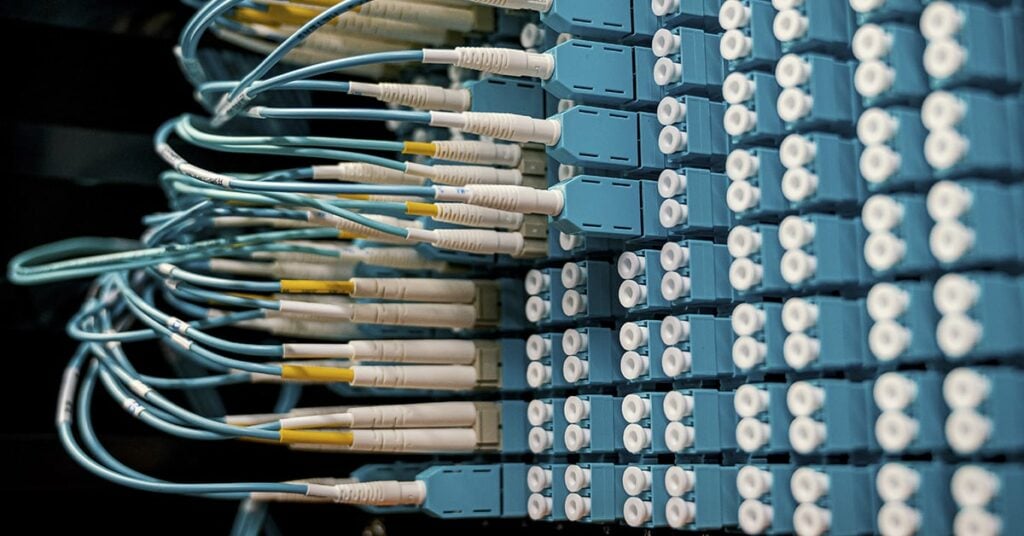Your tools’ sophistication can significantly impact your success, particularly in activities such as web scraping that necessitate a sophisticated approach to data collection. Understanding the dynamic between sticky IPs and rotating sessions in the proxy world is essential for achieving the best results. Whether you’re aiming for a static proxy approach or a more fluid IP strategy, it’s vital to know which type of proxy aligns with your goals. So do you know what the difference is between a sticky and a rotating proxy?
The essentiality of this knowledge becomes apparent when you’re dealing with a single IP address versus multiple rotating ones. If you’re involved in web scraping, you might rely on a rotating proxy setup to enhance your efforts in data extraction without hitting the roadblocks of being flagged or blocked. Rotating sessions ensure that with every new request made to a server, a fresh IP address is presented, drastically reducing the risk of detection.
You may have done some research online and read about “rotating” proxies, and maybe you stuck it into Google to see what it meant. Unfortunately, you may have ended up more confused than before. That’s why we extensively explain the difference between a sticky and a rotating proxy in this article.
| Interested in buying a sticky or a rotating proxy? |
| Check out our proxies! |
The Definition of a Proxy
Table of Contents
ToggleBefore delving into the finer points of rotating and sticky proxies, let us first look at the basics of proxies.
In broad terms, a proxy is an individual who acts on behalf of another.
As far as the internet is concerned, a proxy server accesses and redirects content in your stead.
For example, some websites block access based on location, which means you can’t see them outside their region. Proxies can help you bypass these restrictions, allowing you to see what’s available.
A proxy server relays traffic between your device and the web, ensuring that your browser is never in direct contact with the sites you visit.
Source: AVG AntiVirus, Cybersecurity Software Company
Proxies are everywhere on the internet. Almost all websites that you visit use a proxy to hide their identity.
You see, when someone visits Google, they are redirected to another site, like Google Maps or YouTube, but they can’t tell the difference because they are going through a proxy server first.
If only one site on the web utilized proxies, then what would be the purpose of reading this article? Well, there are various proxies with different ways of working.
Also read: Top 5 Best Rotating Residential Proxies
Proxy Definitions for “Sticky” and “Rotating”
And now, let’s look closer at sticky sessions and rotating IP proxies.
Sticky Proxies
The IP address of a sticky proxy “sticks” for up to 10 minutes. The proxy will allocate a new IP if the port is inactive or the connection is closed.
This means that if someone were to track your IP address from a website you visit with a sticky proxy enabled, they would only see the IP address you used at the time—but not all the other occasions you visited outside that window!
Sticky proxies could be considered a subtype of rotating proxies.
Rotating Proxies
Proxy servers that rotate IP addresses with each request are called rotating proxies.
Upon receiving a request, this proxy will immediately alter the origin IP. Reloading a page or going to a different website will give you a new IP each time.
As a result, websites that block IPs for submitting repeated requests won’t ban yours since your IP cycles regularly.
Also read: Top 5 Best Rotating Datacenter Proxies
When To Use Sticky Proxies?
A sticky proxy is helpful when you wish to appear as the same person accessing a website for a longer time.
Sticky proxies are also handy when creating multiple social media accounts using varied IP addresses and identities. This option is a great choice when running advertising campaigns or gathering information on consumer behavior and brand awareness from social media activity.
E-commerce is another scenario in which sticky proxies might be useful. They help you grab exclusive offers and items you can only find in certain places.
Remember that you should use a single continuous IP address while making online purchases to avoid being flagged as a fraudulent account.
However, sticky proxies aren’t the ideal choice when striving for perfect anonymity—in this case, it’s better to use rotating proxies.
Also read: Why Social Media Is Important for Businesses?
When To Use Rotating Proxies?
One of the best ways to protect your online privacy is by using a rotating proxy. They are proxy servers that change their IP address regularly. This approach makes it more difficult for hackers to track you down, as they will have trouble finding your actual IP address when it looks like it’s constantly changing.
These different IP addresses are indispensable tools for anyone who wants to quickly gather large volumes of data from several websites. It also becomes much simpler to stop triggering bot detection on the target site because this sort of proxy configuration makes it seem like each request is coming from a different person. At least, it does when it’s a residential proxy.
This feature is important for numerous data mining activities. Examples include market and advertising analysis, news reporting, and site audits, which evaluate a website’s search visibility for elements like traffic and search engine ranks.
In some cases, however, you may want to use something apart from a rotating proxy. This is because they can slow down your internet connection. For example, if you’re playing an online game where speed is crucial, or even just watching a video on YouTube, then using a rotating proxy may not be worth it. However, using a rotating proxy will be fine if you’re browsing the web or doing things that don’t require high bandwidth.
Furthermore, keep in mind that sudden IP changes during an activity that needs user login might set off anti-bot protections.
Also read: Reasons You Need a YouTube Proxy
Web Scraping Use Case
The relationship between static and rotating proxies has significant implications for those executing web scraping operations. The use of a static proxy can offer the appearance of a typical user who returns to a site, providing the necessary consistency to avoid raising red flags. Conversely, a system of rotating sessions with a new proxy each time offers an additional layer of anonymity and minimizes the chances of being blacklisted when scraping data at scale.
Ultimately, selecting between a sticky IP and a rotating proxy hinges on the specific requirements of your web scraping project. A static proxy may be the preferred choice for tasks that benefit from a single, consistent IP address, while rotating sessions might be best for scraping a large array of data from various sources where detection evasion is paramount.
Also read: Solving Web Scraping Pagination Challenges
So, Which Proxy Should I Use?
Sticky and rotating proxies both mask a user’s real identity behind proxy IPs for anonymous web browsing.
Rotating proxies, which use a new IP address for each request, are the industry standard for site scraping and high-volume searches to avoid bans and limits.
Sticky proxies, with IPs that can persist anywhere from a few seconds to 30 minutes, enable users to visit sites requiring a login session while maintaining their anonymity. They can then access the target website while looking like any other regular user.
However, both sticky and rotating proxies may offer the insights and information needed for effective online campaigns. It depends on your objectives and the extent of your online activity.
Also read: Business Growth Using Proxies
Frequently Asked Questions
Q1. Should I enable rotating IP?
Yes, you should enable rotating IP if you’re sending multiple connection requests to a website—especially for scraping, automation, or managing multiple accounts. Rotating IPs helps reduce the risk of IP bans by spreading your activity across different addresses instead of hammering a site from just one.
If you’re using mobile proxies, rotating is even more natural because mobile networks change IPs frequently. This makes your traffic look like it’s coming from real mobile users, which is harder for websites to detect and block.
So if your use case involves repeated or sensitive actions, turning on rotating IP is one of the smartest moves you can make to stay under the radar and keep everything running smoothly.
Q2. What is static IP vs. rotating IP?
The difference between a static IP and a rotating IP comes down to how often your IP address changes.
A static IP (sometimes called a sticky IP address) stays the same for each session or even over long periods of time. It’s useful when you need consistency—like logging into accounts, maintaining sessions, or using services that don’t like frequent IP changes.
A rotating IP, on the other hand, changes automatically after each request or at set intervals. This is great for web scraping, automation, or anything where you want to avoid detection, rate limits, or bans. It makes your traffic look like it’s coming from multiple users instead of one.
In short:
- Static IP / sticky IP address = consistent, stable, good for account-based tasks.
- Rotating IP = constantly changing, ideal for staying anonymous and avoiding blocks.
Also read: What Are Datacenter Rotating Proxy IPs? A Comprehensive Guide
Conclusion
In summary, the intelligent application of sticky proxies and rotating sessions can elevate the art of web scraping. They provide a significant advantage to those with the expertise to leverage them correctly.
You know what they say: use the right tool for the job. And when it comes to proxies, there are many different tools out there. Here at KocerRoxy, we know that staying anonymous online is important to you. We believe it should be easy to do. This is why we offer an intuitive dashboard for our adjustable rotating and sticky proxy services. Try us out today!
How useful was this post?
Click on a star to rate it!
Average rating 0 / 5. Vote count: 0
No votes so far! Be the first to rate this post.
Tell Us More!
Let us improve this post!
Tell us how we can improve this post?


